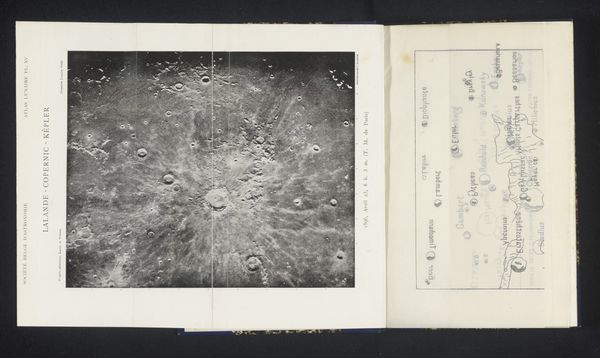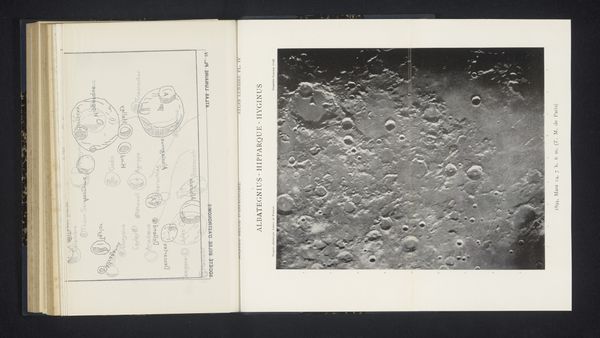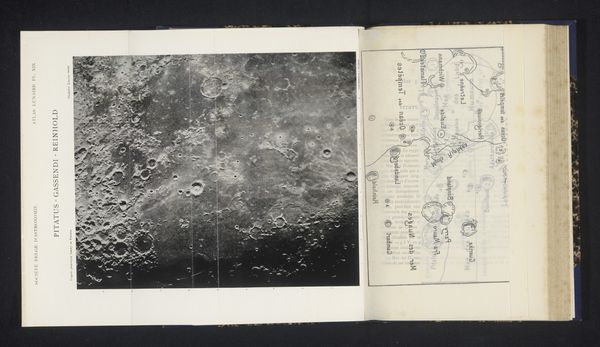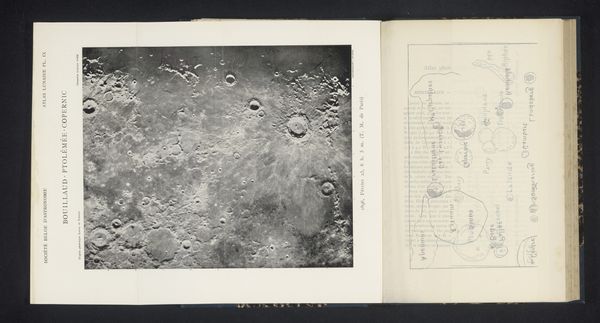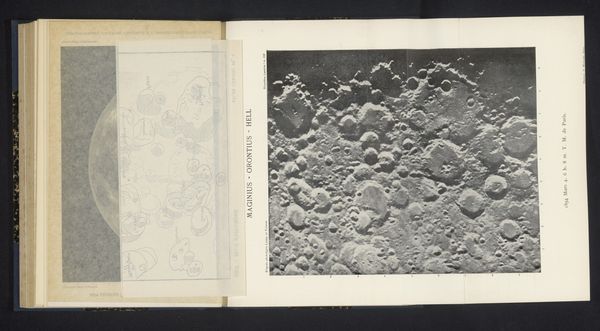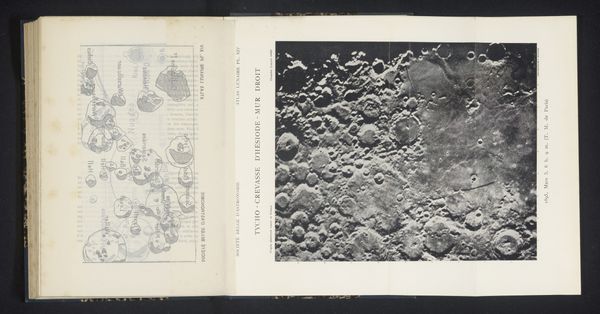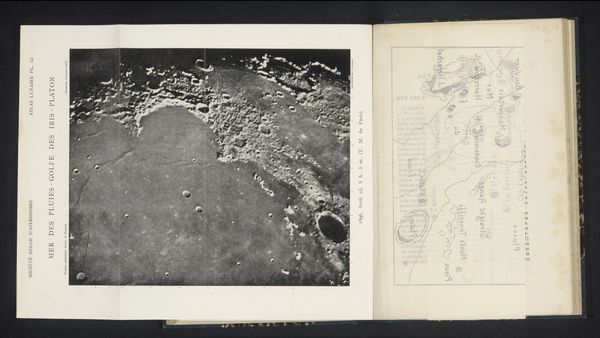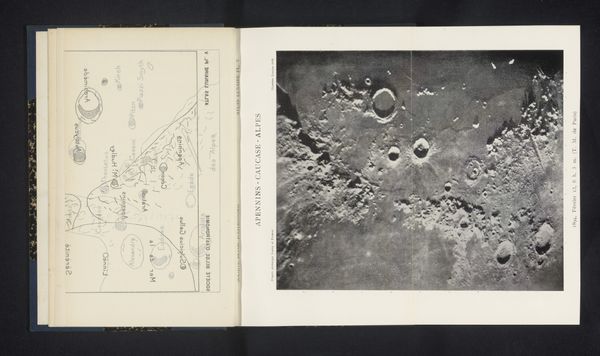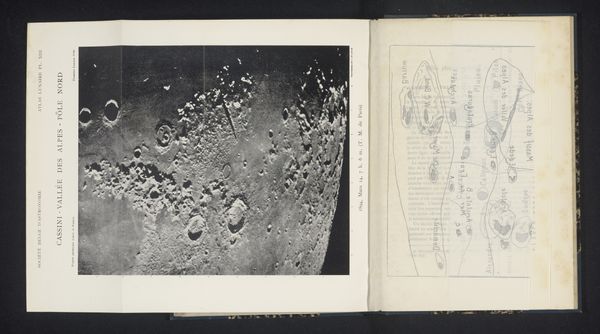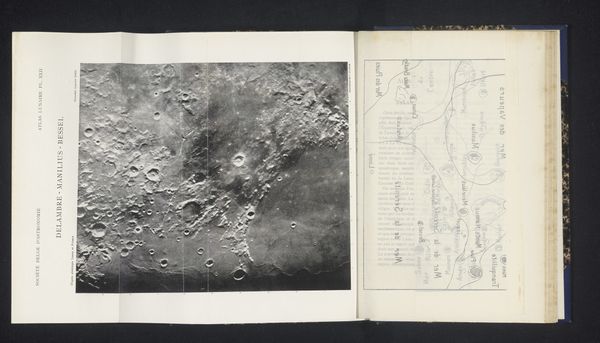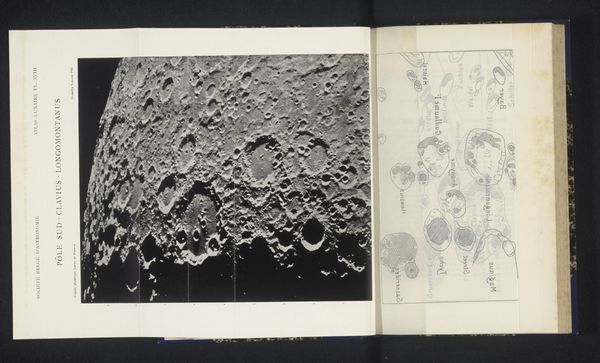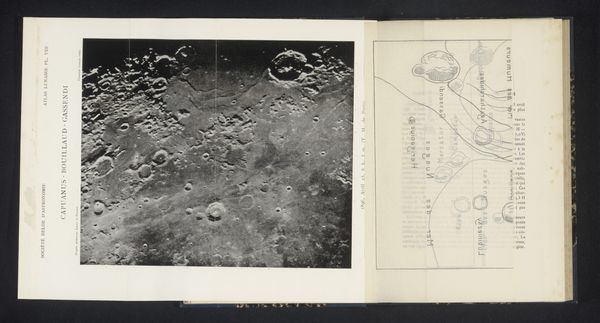
print, photography, graphite, engraving
#
aged paper
# print
#
typeface
#
hand drawn type
#
landscape
#
photography
#
personal sketchbook
#
hand-drawn typeface
#
fading type
#
stylized text
#
thick font
#
graphite
#
handwritten font
#
engraving
#
historical font
Dimensions: height 232 mm, width 192 mm
Copyright: Rijks Museum: Open Domain
This lunar atlas plate by Loewy and Puiseux reveals the moon's cratered surface in stark detail. The dominant visual symbol here is the circle: the lunar craters themselves. These craters are reminiscent of eyes, staring back at us. For millennia, the eye has been a potent symbol of divine omniscience, ever watchful. Think of the Eye of Providence, the Eye of Horus, or even the Cyclops. This idea of observation and a higher power connects to the moon as a symbol of mystery and divinity across cultures. The moon, like the eye, reflects light, suggesting a mirror to the soul, or a gateway to hidden knowledge. Our fascination with the moon, and these circular indentations, speaks to a deeply ingrained human curiosity. It touches upon an ancient drive to map and understand the unknown, searching the cosmos for meaning. The image of the moon and its craters is not just a scientific observation, but a profound echo of our collective yearning for what lies beyond.
Comments
No comments
Be the first to comment and join the conversation on the ultimate creative platform.
